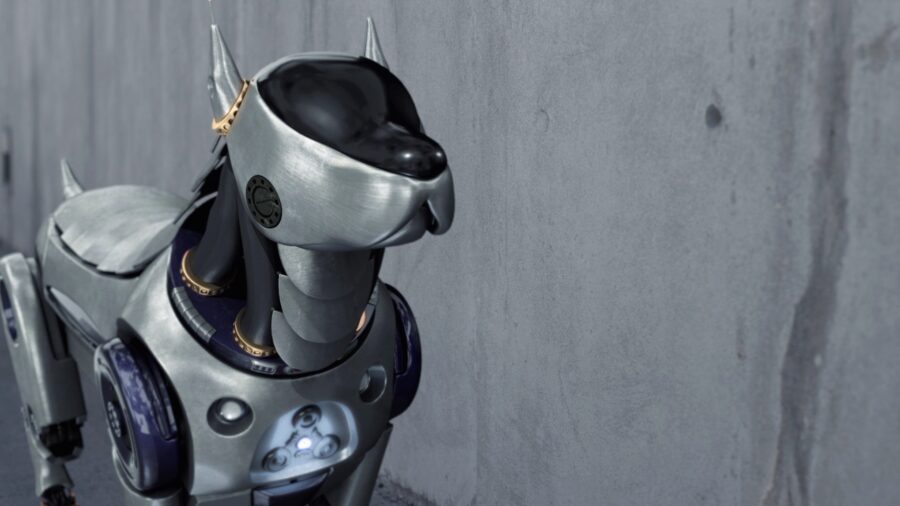Armed Robot Dogs With Mounted Rifles Become Real

The future of close combat warfare may soon see an unconventional addition of armed robot dogs equipped with mounted rifles. According to The Byte, The United States Army is actively experimenting with this unique concept to “explore the realm of the possible.” The idea is to deploy robotic dogs to assist with various military tasks on the battlefield.
Bhavanjot Singh, a senior scientific technical manager at the Army’s Combat Capabilities Development Command (DEVCOM), brought the idea of armed robot dogs to the forefront during a meeting with lawmakers in Washington, D.C. The proposal involves fitting a Ghost Robotics-manufactured Vision 60 Quadruped Unmanned Ground Vehicle (Q-UGV) with the Army’s Next Generation Squad Weapon rifle.
“While advanced technology demonstrations, in this case, related to the Next Generation Squad Weapon and unmanned ground vehicles, allow us to explore the realm of the possible when it comes to transformative capabilities for future combat formations, they don’t necessarily represent or result in formal service-wide research programs or investments.”
DEVCOM spokesman Tim Ryder
Armed robot dogs mark a significant step toward using unmanned robots designed to mimic some of the capabilities of our four-legged companions. While the Army has previously experimented with mounting an M4A1 carbine on a Q-UGV, testing the Sig Sauer XM7 rifle opens new possibilities for these robotic canines.
One of the key advantages cited by Singh is the robot dog’s unique ability to navigate various types of terrain, which might be challenging for conventional wheeled vehicles. However, DEVCOM spokesman Tim Ryder emphasized that the development of a prototype doesn’t necessarily mean these weaponized robot dogs will see active deployment.
“While advanced technology demonstrations, in this case, related to the Next Generation Squad Weapon and unmanned ground vehicles, allow us to explore the realm of the possible when it comes to transformative capabilities for future combat formations, they don’t necessarily represent or result in formal service-wide research programs or investments,” Ryder told Military.com about the robot dogs.

The Sig Sauer XM7 rifle, chambered for 6.8mm ammunition, was adopted under the Next Generation Squad Weapon program in 2022, aiming to replace the M4 carbine and M249 Squad Automatic Weapon in Army arsenals within the next decade. However, concerns have arisen about its size and weight for standard infantry use despite its popularity among U.S. special operations forces.
Lawmakers in DC recently heard details of a proposal to permit the use of military robot dogs armed with rifles on the battlefield.
By contrast, robot dogs like the Vision 60 Q-UGV have become increasingly prevalent in the U.S. military. They serve various functions, including enhancing perimeter security, bolstering intelligence, surveillance, target acquisition, and reconnaissance (ISTAR) capabilities in remote environments, and even performing some explosive ordnance disposal tasks under the guidance of their human operators.
While semi-autonomous and remotely controlled weapons platforms are established tools in the military’s arsenal, the idea of arming robot dogs and deploying them alongside troops has sparked controversy in the robotics industry. Leading robotics companies, including Boston Dynamics, have voiced concerns about weaponizing such technology, citing ethical and safety issues.
However, the controversy hasn’t deterred defense contractors from exploring new combinations of unmanned ground robots and weapons systems. Examples include Ghost Robotics and SWORD International unveiling a Special Purpose Unmanned Rifle robot dog armed with a 6.5mm Creedmoor rifle and a video showcasing a Chinese uncrewed aerial vehicle deploying a robot dog armed with a 5.8x42mm QBB-97 light machine gun.
One of the key advantages cited by Singh is the robot dog’s unique ability to navigate various types of terrain, which might be challenging for conventional wheeled vehicles.
Army officials overseeing the robotics program have indicated that it may be at least a decade before armed robot dogs are deployed alongside soldiers. Milot Resyli, the chief of dismounted robotic systems at DEVCOM’s Ground Vehicle Systems Center, noted the limitations of multi-legged ground robots, citing mobility benefits while also highlighting endurance, payload capability, and power constraints.
Despite these developments, the Defense Department remains committed to responsibly and lawfully using all weapon systems, including autonomous ones like robot dogs, as outlined in the Pentagon’s latest update to DoD Directive 3000.09, “Autonomy in Weapons Systems.”












